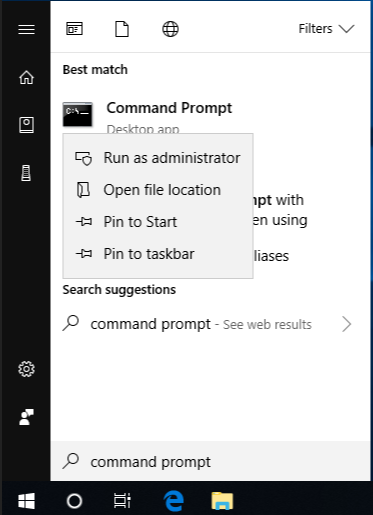

- #How to search for system files on windows 10 full
- #How to search for system files on windows 10 windows 10
- #How to search for system files on windows 10 software
- #How to search for system files on windows 10 Pc
We cover virtually every technique that can be used to find a file on a Windows 10 machine to locate those important files that seem to have disappeared.
#How to search for system files on windows 10 Pc
Read the system information with Windows Care Genius a best PC optimiser tool. This article will help you find misplaced or lost files on your Windows 10 system using a variety of different built-in and third-party methods.
#How to search for system files on windows 10 software
Note: Some third party software also has the a feature that shows the complete system information. It will open the file from current directory with notepad text viewer. To open the file just type sysinfo.txt on command line and press enter. Yes, the report has exported to a text file. Windows 10 System Information Report with Command Line To export the system information to a text file, type “ systeminfo > sysinfo.txt” and press enter to create and write the system information to text file. Find Windows 10 System Information with Command Line Open the command prompt (cmd.exe) and type “ Systeminfo” then press enter. The command line is light and easy to display, read and export a readable reports of system information to a text file. Find System Information with Command Line nfo file reader which currently Windows display the system information with. Click the File menu and select Save to export a clear reports of system information. To issue a report of a system information, you can export all system information to text or. Even you can search an exact hardware and system related software information. That’s is it, how easily you can find all your system information in one place. For example, to find your computer’s Internet protocol (IP) address, type IP address in the Find what box, and then click Find. To find a specific detail in System Information, type the information you’re looking for in the Find what box at the bottom of the window.

Let’s know your comments.A simple way to find Windows 10 System Information. That’s it! Hope you found this tip useful.
#How to search for system files on windows 10 full
Next, you can paste the full location of the selected folders/files anywhere including NotePad, Command Prompt or PowerShell. Once you are there, hold the SHIFT key and right-click the desired folders/files, then select “ Copy as path” from the context menu. Open Windows Explorer and navigate to the files or folders whose path you want to copy. In this tutorial we’ll show you the fastest way to copy the full path of any folder or file in Windows 10 / 8 / 7. However, this method has inherently low efficiency, especially if you need to frequently copy the file path and paste it into a tool like Command Prompt or PowerShell. The path is shown next to the Location header, and you need to append the file name at the end to get the full file path. Is there a quick way to copy the file path instead of typing it? Just right-click on your selected file and select Properties from the context menu.


 0 kommentar(er)
0 kommentar(er)
